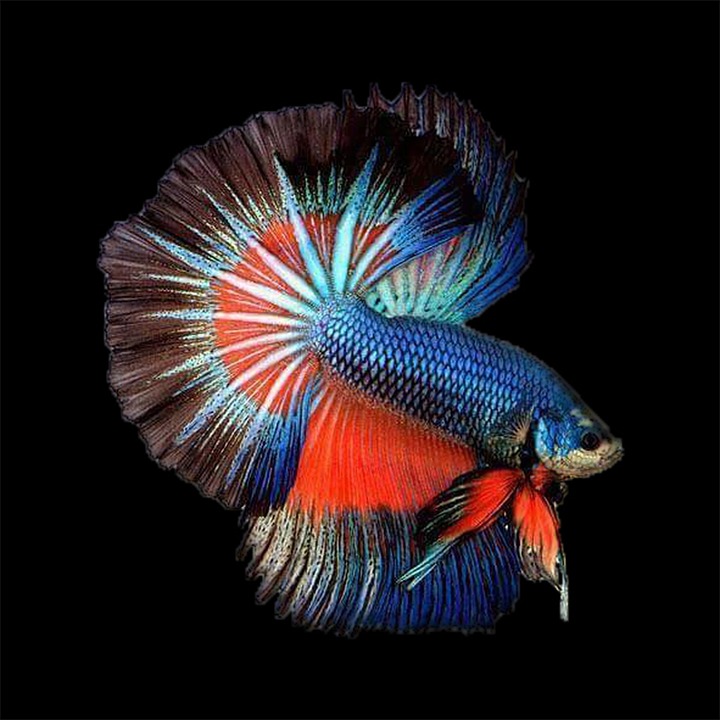Title: Optimal Use of Bottom-Dwelling Habitats for Specific Fish Species: A Comprehensive Guide
Introduction
Bottom-dwelling habitats are crucial for the overall health and well-being of fish species. Understanding the specific habitat preferences of these species is essential for creating an optimal environment. This comprehensive guide aims to provide valuable insights into choosing, setting up, and maintaining suitable bottom-dwelling habitats for different fish species.
Why Bottom-Dwelling Habitats are Essential for Fish Health
Bottom-dwelling habitats play a vital role in simulating the natural environment for fish species. They provide essential hiding spots, resting areas, and foraging opportunities. These habitats also promote natural behaviors and reduce stress levels, ultimately leading to improved fish health and longevity.
Importance of Understanding Specific Species’ Habitat Preferences
Each fish species has unique habitat preferences that must be considered to ensure their well-being. Factors such as tank size, substrate type, hiding spots, water flow, and lighting conditions can significantly impact the behavior and overall health of bottom-dwelling fish. Therefore, understanding these preferences is key to creating a suitable habitat.
Choosing the Right Bottom-Dwelling Habitat for Specific Fish Species
Researching Species-Specific Habitat Requirements
Before setting up a bottom-dwelling habitat, it is crucial to research and understand the specific needs of the fish species you plan to keep. This includes their natural habitat, preferred water parameters, and social behaviors.
Factors to Consider when Selecting a Bottom-Dwelling Habitat
Several factors should be considered when selecting a bottom-dwelling habitat:
1. Tank Size and Shape: Different fish species have varying space requirements. It is important to choose a tank size and shape that can accommodate the specific species comfortably.
2. Substrate Type and Composition: Selecting the appropriate substrate, such as sand or gravel, is essential. Some fish species prefer a sandy substrate, while others thrive on gravel.
3. Hiding Spots and Caves: Providing ample hiding spots, caves, and crevices is crucial for bottom-dwelling fish species. These areas mimic their natural habitat, offering security and privacy.
4. Water Flow and Oxygenation: Bottom-dwelling fish species often prefer areas with moderate water flow and well-oxygenated water. Adjusting the tank’s filtration system and adding air stones can help maintain optimal water conditions.
5. Lighting Conditions: Some bottom-dwelling species prefer dimly lit environments, while others thrive under brighter lighting. Understanding the lighting preferences of the species will contribute to their overall well-being.
Bottom-Dwelling Habitat Setup and Maintenance
Preparing the Tank for Bottom-Dwelling Habitats
Proper preparation of the tank is crucial for the success of a bottom-dwelling habitat:
1. Cleaning and Sterilizing the Tank: Thoroughly clean and sterilize the tank before introducing any substrate or decorations to eliminate harmful bacteria.
2. Substrate Preparation and Placement: Rinse the chosen substrate thoroughly to remove any debris or dust. Place it evenly across the tank’s bottom to create a suitable bottom-dwelling environment.
3. Incorporating Live Plants and Decorations: Live plants and decorations provide additional hiding spots and natural aesthetics. Choose plants and decorations that are compatible with the selected fish species.
Maintaining a Healthy Bottom-Dwelling Environment
Regular maintenance is essential to ensure the health and well-being of bottom-dwelling fish:
1. Regular Tank Cleanings and Water Testing: Perform regular tank cleanings to remove debris and waste. Test the water parameters regularly to ensure they are within the appropriate range for the fish species.
2. Controlling Algae Growth: Algae growth is common in bottom-dwelling habitats. Implementing effective strategies such as controlling lighting duration and adding algae-eating fish or snails can help manage algae growth.
3. Ensuring Proper Oxygenation and Filtration: Maintain proper oxygenation levels by ensuring adequate water flow and a well-functioning filtration system. This will help maintain optimal water quality for bottom-dwelling fish.
Specific Bottom-Dwelling Habitats for Common Fish Species
The following species-specific habitats are popular choices for bottom-dwelling fish:
1. Corydoras Catfish: Provide a sandy substrate, ample hiding spots, and gentle water flow. They also appreciate the presence of live plants.
2. Bristlenose Plecos: Offer a mix of hiding spots, caves, and driftwood. A sandy substrate and moderate water flow are preferable.
3. Kuhli Loaches: Opt for a soft substrate such as sand, along with hiding spots and plants. Dimly lit environments are preferred.
4. African Dwarf Frogs: A combination of a sandy substrate, hiding spots, and floating plants is ideal. Maintain gentle water flow and ensure a well-oxygenated environment.
5. Electric Blue Acara: Provide a combination of rocks, caves, and plants. A sandy substrate and moderate water flow are suitable for this species.
FAQs: Bottom-Dwelling Habitats for Fish Species
1. Can I mix different bottom-dwelling species in the same tank?
It is generally safe to mix compatible bottom-dwelling species in the same tank. However, research each species’ compatibility and ensure sufficient space and resources for all.
2. How many hiding spots should I provide for bottom-dwelling fish?
Provide multiple hiding spots to accommodate the natural behavior of bottom-dwelling fish. Aim for at least one hiding spot per fish, ensuring they have enough space to claim their territory.
3. Are live plants necessary for bottom-dwelling species?
Live plants are not always necessary but can provide additional benefits such as oxygenation, natural filtration, and hiding spots. They also contribute to the overall aesthetics of the habitat.
4. What are the signs of an unhealthy bottom-dwelling habitat?
Signs of an unhealthy habitat include discolored or cloudy water, excessive algae growth, lethargic fish, aggressive behavior, and poor appetite. Regular monitoring and maintenance can help prevent these issues.
5. Can bottom-dwelling fish survive without a specific habitat?
While some bottom-dwelling fish species may survive in a generic tank setup, providing a suitable habitat that mimics their natural environment greatly improves their overall health and well-being.
Conclusion
Creating an optimal bottom-dwelling habitat for specific fish species is crucial for their health and well-being. By understanding their habitat preferences and implementing proper setup and maintenance practices, fishkeepers can provide a thriving environment. Continuous monitoring and adaptation are essential to ensure optimal fish health and longevity in bottom-dwelling habitats.









